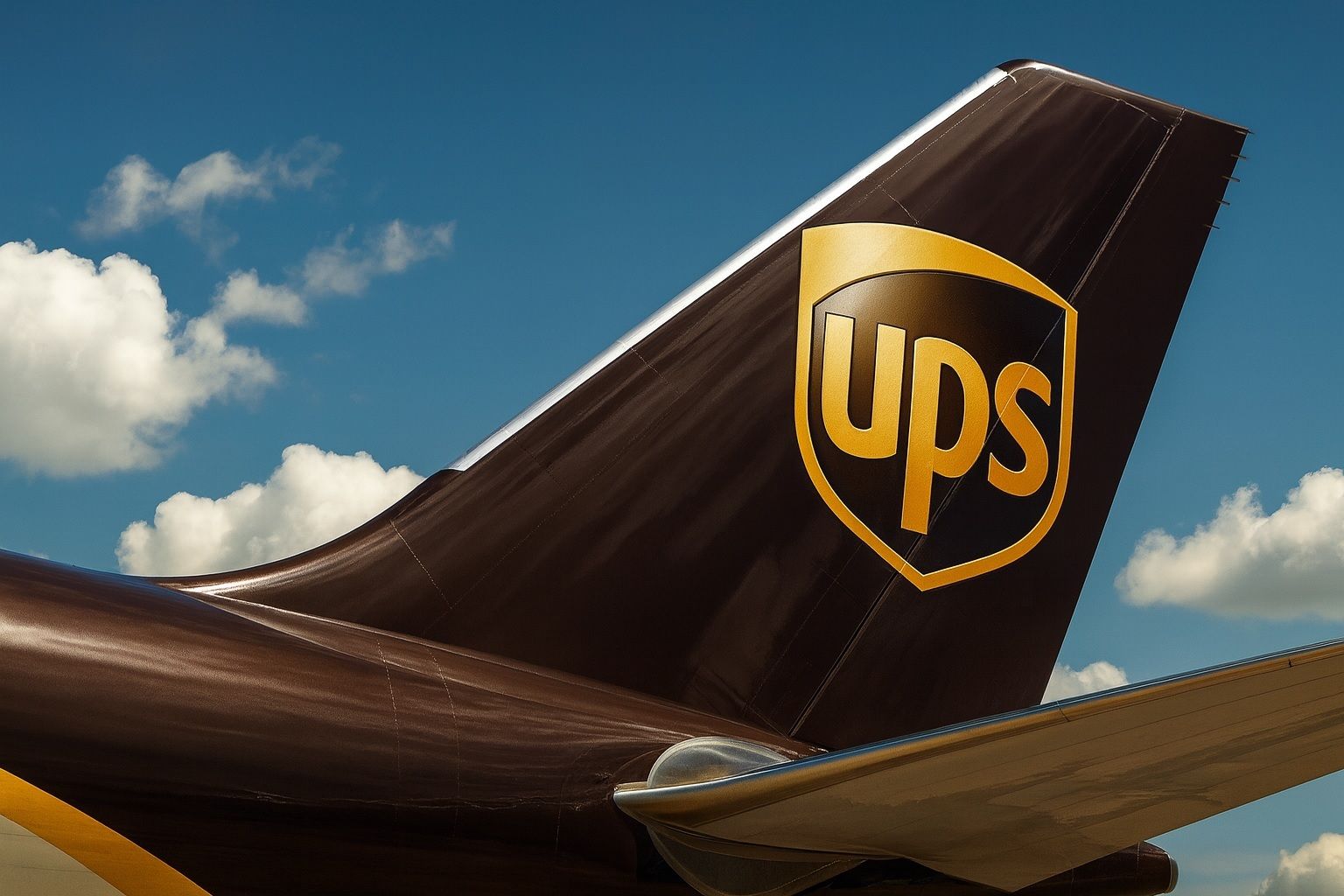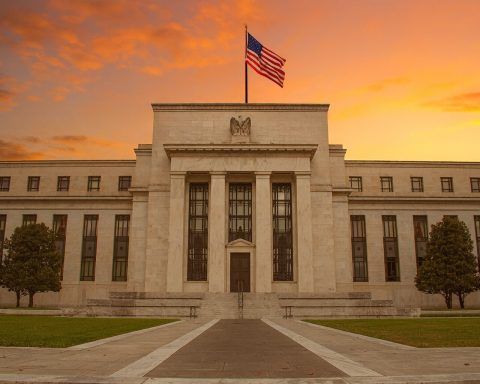United Parcel Service, Inc. (NYSE: UPS) enters the weekend under intense regulatory scrutiny and strong investor interest, as fresh details emerge about the deadly Louisville cargo crash and several major institutions disclose sizeable moves in the stock.
NTSB prelim report: how UPS Flight 2976 broke apart seconds after takeoff
The National Transportation Safety Board (NTSB) has released its preliminary report into UPS Airlines Flight 2976, the MD‑11 freighter that crashed shortly after takeoff from Louisville on November 4, killing 14 people – three UPS crew members and eleven people on the ground. [1]
Key technical findings from the preliminary investigation: [2]
- The aircraft climbed to only about 30 feet before disaster struck – far lower than early estimates based on ADS‑B tracking.
- Airport surveillance video captured the left engine and its pylon separating from the wing, arcing over the fuselage and trailing fire before falling to the ground.
- A fire ignited near the left pylon attachment point on the wing and burned until impact.
- Metallurgical analysis found fatigue cracks in the aft mount of the left engine pylon; both forward and aft lugs of the mount had fractured, along with the spherical bearing’s outer race.
- The MD‑11, tail number N259UP, had logged 92,992 flight hours and 21,043 cycles. The critical inspection that might have revealed the cracks was not yet due under the current maintenance schedule.
- Total casualties: 14 dead, 23 injured (2 serious, 21 minor), making this the deadliest accident in UPS Airlines history. [3]
Newly released NTSB images, also highlighted by ABC News, show the moment the engine tears away from the wing and the aircraft is briefly engulfed in flames before crashing into nearby industrial buildings. [4]
The preliminary report does not yet assign a final cause, but it clearly centers the investigation on structural fatigue in the engine mount and raises renewed questions about the aging MD‑11/DC‑10 fleet worldwide. [5]
UPS & FAA response: MD‑11s grounded and DC‑10s under tighter scrutiny
UPS has been publicly updating its response in a rolling corporate statement, most recently amended on November 20: [6]
- November 7: UPS proactively grounded its entire MD‑11 fleet, which represents roughly 9% of UPS Airlines’ aircraft.
- The company says contingency plans are in place to maintain service, shifting volume to other fleet types such as 747s and 767s. [7]
- November 20 update: UPS welcomed the NTSB’s preliminary release and reiterated its commitment to fully support the investigation, calling the accident “a tragic event” and emphasizing that “nothing is more important… than the safety of our employees and the communities we serve.” [8]
Regulators have gone further:
- The FAA issued an emergency Airworthiness Directive (AD) grounding all MD‑11/MD‑11F aircraft pending inspections focused on engine-mount fatigue. [9]
- A second directive extended similar measures to DC‑10 series aircraft, citing comparable structural risks. [10]
With only about 70 MD‑11s still flying globally—mostly in freight service for UPS, FedEx and Western Global—this grounding disproportionately affects express cargo operators and could accelerate fleet‑retirement and replacement plans. [11]
Louisville’s Worldport hub: operations resume after unprecedented disruption
The crash shut down UPS’s Worldport air hub in Louisville, Kentucky, one of the most critical nodes in global express logistics.
- Worldport handles roughly 360 aircraft movements and up to 416,000 packages per hour, making it essential to UPS’s hub‑and‑spoke air network. [12]
- UPS temporarily halted operations at the facility on the night of the crash, triggering delays for major customers including the U.S. Postal Service, Amazon and Walmart. [13]
By November 5, UPS told Reuters it would reopen Worldport that evening, aiming to return the network “to a normal cadence” with flights arriving at destinations by Thursday morning. [14]
Local station WAVE‑3 reported that: [15]
- UPS quickly resumed Next Day Air night‑sort operations and started to ramp back toward normal schedules.
- Federal and local programs have begun offering disaster loans to area businesses hit by the crash, underlining the wider economic shock to the Louisville region.
Big money moves: institutions reshuffle UPS exposure on November 22
While investigators focus on the technical causes of Flight 2976, Wall Street is repositioning around UPS stock. A cluster of Form 13F‑driven headlines today (Nov. 22) reveals a flurry of institutional trading in the second quarter:
Institutions increasing their stakes
- Swiss National Bank
- Boosted its UPS stake by 7.6%, adding 157,700 shares.
- Now owns 2,220,400 shares (about 0.26% of the company), valued around $224.1 million as of the filing. [16]
- Handelsbanken Fonder AB
- Increased its position by 25.1%, purchasing 73,667 additional shares.
- Holds 366,978 shares worth roughly $37.0 million. [17]
- Brandywine Global Investment Management LLC
- Lifted its stake by 15.6%, buying 42,398 shares.
- Owns 314,991 shares valued at approximately $31.8 million. [18]
- Cowa LLC
- Increased its UPS holdings by a striking 329.2% in Q2.
- Now owns 8,785 shares, up by 6,738 shares, for a position worth about $887,000. [19]
Institutions trimming exposure
- Legal & General Group Plc
- Cut its UPS holdings by 2.1%, selling 87,809 shares.
- Still holds 4,117,171 shares, or roughly 0.49% of UPS, valued around $415.6 million. [20]
- Bowen Hanes & Co. Inc.
- Reduced its position by 33.9%, selling 4,500 shares.
- Now owns 8,791 shares, valued near $887,000. [21]
Across these alerts, MarketBeat notes that UPS carries a consensus “Hold” rating with an average analyst price target around $110 and an annualized dividend yield close to 6.9%, reflecting both income appeal and investor caution after a difficult year. [22]
Earnings backdrop: profit beats, 48,000 job cuts and a radical overhaul
Today’s headlines sit on top of a major restructuring that has been unfolding all year.
In its Q3 2025 results on October 28, UPS: [23]
- Reported EPS of $1.74, beating Wall Street’s consensus estimate of $1.31.
- Posted revenue of $21.42 billion, slightly above forecasts, though down 3.7% year‑over‑year.
- Saw revenue per piece rise about 9.8%, even as average daily volume fell 12.3%, underscoring a deliberate push toward higher‑yield business and away from lower‑margin flows.
- Confirmed it has eliminated 48,000 jobs so far in 2025 and closed 93 facilities as part of a sweeping plan to cut about $3.5 billion in costs and reconfigure its U.S. network.
CEO Carol Tomé framed 2025 as “the most profound shift in trade policy in a century,” arguing that UPS’s global network and customs‑brokerage expertise positions it to help shippers navigate the end of de‑minimis treatment for low‑value imports and new tariff regimes. [24]
A separate UPS corporate summary of the Q3 call highlights: [25]
- A strategic pivot toward Healthcare, small and mid‑sized businesses (SMB), B2B and international customers.
- An accelerated “glide down” of Amazon volumes and continued rollout of the “Network of the Future” automation program.
- A definitive agreement to acquire Andlauer Healthcare Group for $1.6 billion, expanding UPS’s high‑margin healthcare logistics and cold‑chain capabilities in the U.S. and Canada (expected to close around early November). [26]
Taken together, the numbers suggest a company sacrificing volume and headcount to protect margin and cash flow, even as it absorbs the operational shock of the Louisville crash and MD‑11 grounding.
Dividend, yield and pricing: attractive income, higher shipping costs
A rich but stretched dividend
On November 6, UPS’s board declared a quarterly dividend of $1.64 per share on its Class A and B shares, payable December 4 to shareholders of record on November 17. [27]
At a recent share price around $94–95, that payout equates to: [28]
- An annualized dividend of $6.56, or a yield close to 6.9%.
- A payout ratio slightly above 100% of current earnings, a level several analyst summaries describe as elevated and something investors are watching closely.
UPS stresses that its commitment to the dividend is a “core principle”, noting it has maintained or raised the payout every year since its 1999 IPO. [29]
General rate increase and peak surcharges
For shippers, today also marks an important inflection point in UPS pricing:
- UPS will implement an average 5.9% General Rate Increase (GRI) for ground, air and international services starting December 22, mirroring similar hikes at rival FedEx. [30]
- On the same date, UPS will raise key surcharges, including residential delivery fees and Additional Handling charges. For example, the Additional Handling surcharge on a Zone 2 weight‑based package will rise from $43.50 to $46.50; a Ground residential Delivery Area surcharge will go from $6.15 to $6.55. [31]
In addition, an earlier August 28 demand‑surcharge notice divides peak season into three periods, with lower surcharges through November 22, higher surcharges from November 23 to December 27, then a step‑down heading into mid‑January. For “Over Maximum” packages, for instance, the surcharge jumps from $485 now to $540 per package during the core holiday window. [32]
That makes today, November 22, effectively the last day before peak surcharges step up, an important detail for high‑volume shippers trying to keep costs under control.
Balancing risk and opportunity: what today’s news means for UPS
From an investor and shipper perspective, the November 22 news flow paints a picture of a company at a crossroads:
- Safety & regulatory risk
- The Flight 2976 crash and MD‑11 grounding introduce real operational and reputational risk.
- The ultimate cost could include accelerated fleet retirement, potential legal liabilities and higher maintenance and compliance costs. [33]
- Operational resilience
- UPS has so far kept its global network functioning by shifting volume to other aircraft and quickly reopening Louisville’s Worldport hub, but the network remains under strain heading into peak season. [34]
- Financial strength vs. restructuring pain
- Q3 results show margin improvement despite lower volumes and confirm progress toward a $3.5 billion cost‑reduction target, but at the price of tens of thousands of jobs and dozens of facility closures. [35]
- Income appeal vs. payout sustainability
- A near‑7% dividend yield is conspicuously high for a blue‑chip logistics name, explaining why many institutions are adding to their positions even amid turbulence.
- But a payout ratio just above 100% leaves little margin for error if earnings are hit by crash‑related costs, a weaker economy or further volume declines. [36]
- Strategic pivot toward higher‑value logistics
- The pending Andlauer Healthcare Group acquisition, priority focus on healthcare and SMB customers, and deeper partnership with the U.S. Postal Service on Ground Saver all point toward a UPS that is smaller in volume but richer in mix and margin. [37]
For investors, today’s institutional buying and selling suggests no clear consensus: some large holders view current levels as an opportunity to increase exposure to a quality franchise with a generous dividend, while others are modestly de‑risking amid uncertainty. For shippers, the immediate concern is price, as the combination of the December GRI and peak surcharges will push parcel budgets higher just as the MD‑11 grounding adds complexity across express air networks.
Quick takeaways for November 22, 2025
- The NTSB prelim report squarely links the Louisville crash to fatigue cracking in an MD‑11 engine mount, prompting FAA directives that ground MD‑11 and DC‑10 fleets pending inspections. [38]
- UPS has grounded its own MD‑11s, is working with regulators and has restored core operations at Worldport, but faces heightened regulatory and operational risk. [39]
- A cluster of new 13F filings today shows several big institutions—Swiss National Bank, Handelsbanken Fonder, Brandywine Global and Cowa LLC—adding to UPS, while others like Legal & General and Bowen Hanes trim holdings. [40]
- UPS continues to lean into its turnaround plan, with strong Q3 margin performance, ongoing cost cuts and a strategic push into higher‑value healthcare and international logistics. [41]
- Today is the final day before UPS’s peak demand surcharges step up on November 23, ahead of a broader 5.9% rate increase taking effect on December 22. [42]
If you’re following UPS as an investor, customer or competitor, November 22 brings critical new safety details, clearer visibility into institutional sentiment and hard deadlines on shipping costs—all of which will shape the company’s trajectory through the 2025 peak season and into 2026.
References
1. aerospaceglobalnews.com, 2. aerospaceglobalnews.com, 3. aerospaceglobalnews.com, 4. abcnews.go.com, 5. aerospaceglobalnews.com, 6. about.ups.com, 7. about.ups.com, 8. about.ups.com, 9. aerospaceglobalnews.com, 10. aerospaceglobalnews.com, 11. aerospaceglobalnews.com, 12. www.reuters.com, 13. www.reuters.com, 14. www.reuters.com, 15. www.wave3.com, 16. www.marketbeat.com, 17. www.marketbeat.com, 18. www.marketbeat.com, 19. www.marketbeat.com, 20. www.marketbeat.com, 21. www.marketbeat.com, 22. www.marketbeat.com, 23. www.reuters.com, 24. www.reuters.com, 25. about.ups.com, 26. investors.ups.com, 27. about.ups.com, 28. www.marketbeat.com, 29. about.ups.com, 30. www.supplychaindive.com, 31. www.supplychaindive.com, 32. assets.ups.com, 33. aerospaceglobalnews.com, 34. www.reuters.com, 35. www.reuters.com, 36. www.marketbeat.com, 37. about.ups.com, 38. aerospaceglobalnews.com, 39. about.ups.com, 40. www.marketbeat.com, 41. www.reuters.com, 42. assets.ups.com










